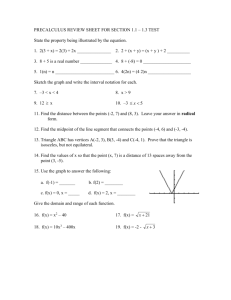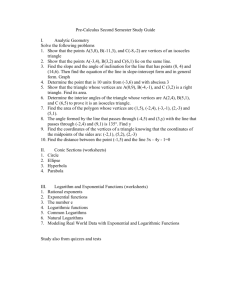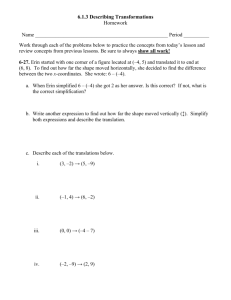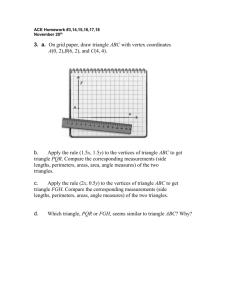additional3
advertisement
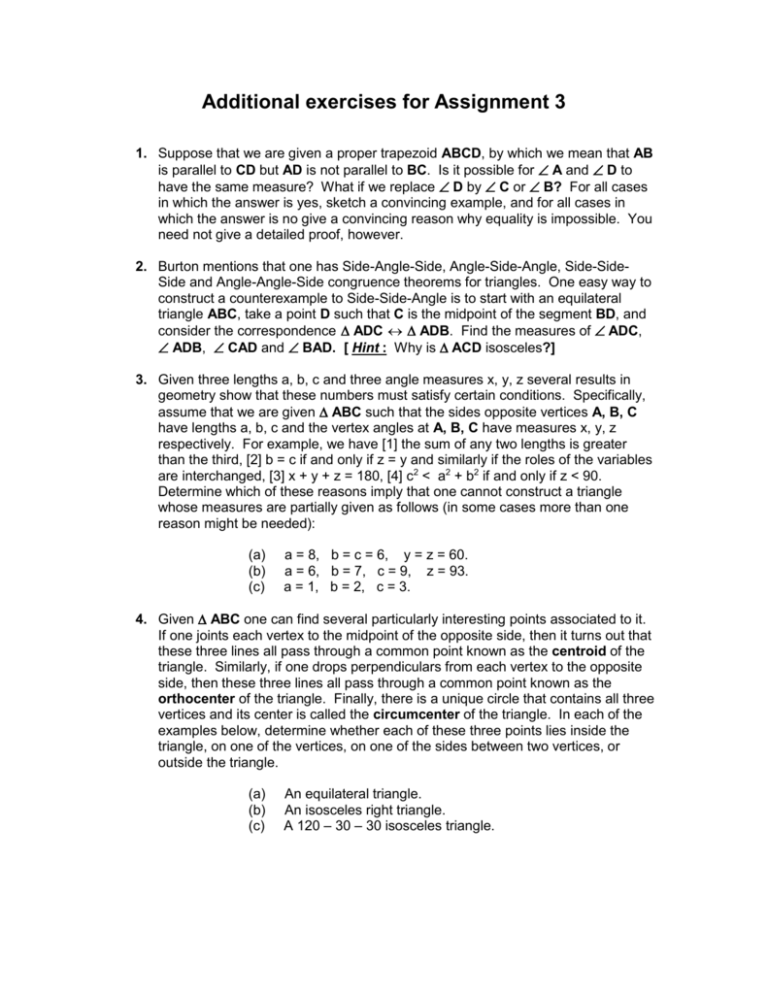
Additional exercises for Assignment 3 1. Suppose that we are given a proper trapezoid ABCD, by which we mean that AB is parallel to CD but AD is not parallel to BC. Is it possible for A and D to have the same measure? What if we replace D by C or B? For all cases in which the answer is yes, sketch a convincing example, and for all cases in which the answer is no give a convincing reason why equality is impossible. You need not give a detailed proof, however. 2. Burton mentions that one has Side-Angle-Side, Angle-Side-Angle, Side-SideSide and Angle-Angle-Side congruence theorems for triangles. One easy way to construct a counterexample to Side-Side-Angle is to start with an equilateral triangle ABC, take a point D such that C is the midpoint of the segment BD, and consider the correspondence ADC ADB. Find the measures of ADC, ADB, CAD and BAD. [ Hint : Why is ACD isosceles?] 3. Given three lengths a, b, c and three angle measures x, y, z several results in geometry show that these numbers must satisfy certain conditions. Specifically, assume that we are given ABC such that the sides opposite vertices A, B, C have lengths a, b, c and the vertex angles at A, B, C have measures x, y, z respectively. For example, we have [1] the sum of any two lengths is greater than the third, [2] b = c if and only if z = y and similarly if the roles of the variables are interchanged, [3] x + y + z = 180, [4] c2 < a2 + b2 if and only if z < 90. Determine which of these reasons imply that one cannot construct a triangle whose measures are partially given as follows (in some cases more than one reason might be needed): (a) (b) (c) a = 8, b = c = 6, y = z = 60. a = 6, b = 7, c = 9, z = 93. a = 1, b = 2, c = 3. 4. Given ABC one can find several particularly interesting points associated to it. If one joints each vertex to the midpoint of the opposite side, then it turns out that these three lines all pass through a common point known as the centroid of the triangle. Similarly, if one drops perpendiculars from each vertex to the opposite side, then these three lines all pass through a common point known as the orthocenter of the triangle. Finally, there is a unique circle that contains all three vertices and its center is called the circumcenter of the triangle. In each of the examples below, determine whether each of these three points lies inside the triangle, on one of the vertices, on one of the sides between two vertices, or outside the triangle. (a) (b) (c) An equilateral triangle. An isosceles right triangle. A 120 – 30 – 30 isosceles triangle.

